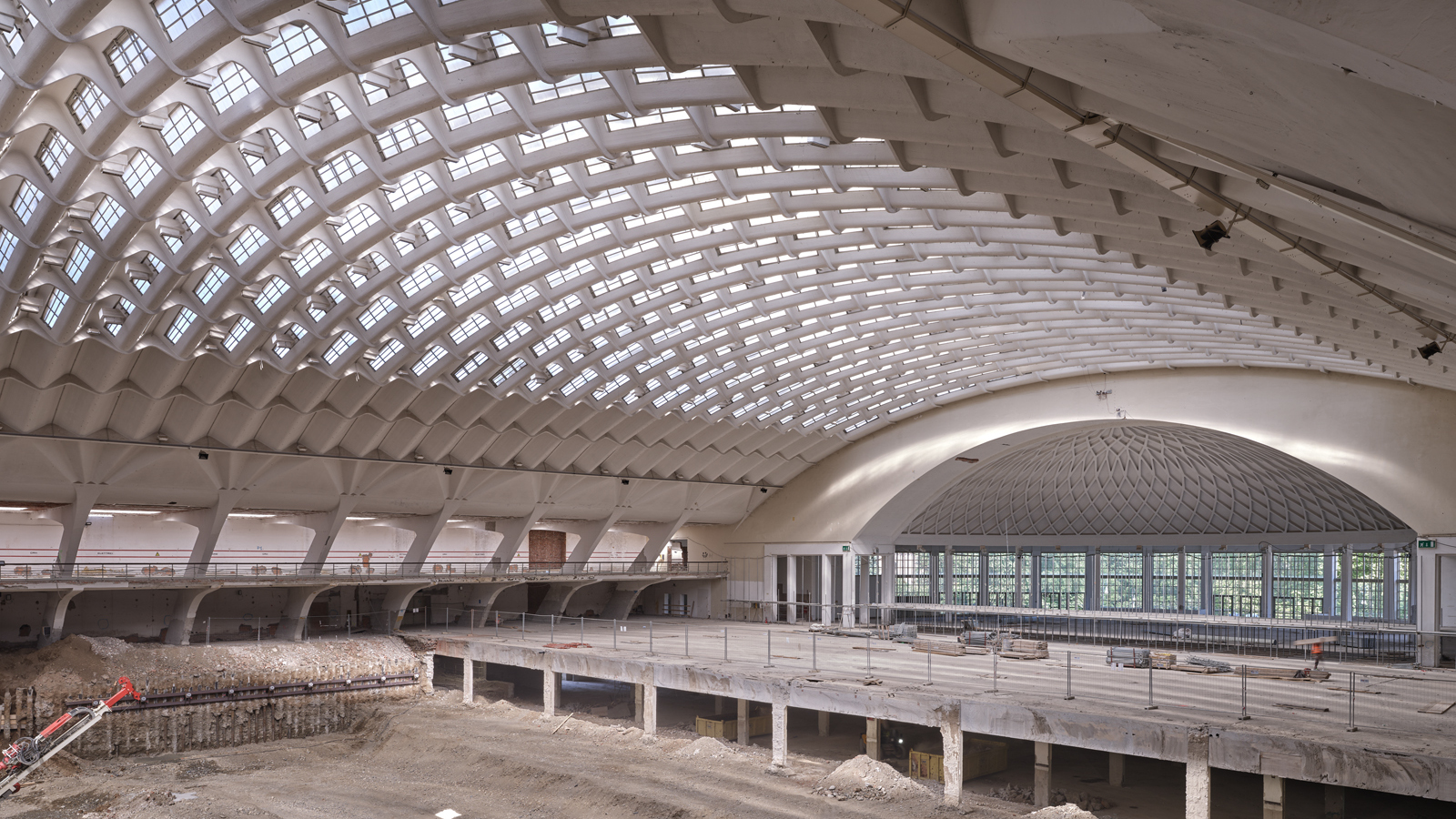
A new life for Palazzo Nervi

A good collaboration model between different public bodies for the public and territorial good: here is Politecnico’s Conservation Plan, led by Centro Interdipartimentale R3C – Responsible Risk Resilience Centre and S.C.R. S.p.A., Piedmont Regional contracting company together with a huge series of local entities and bodies, to secure and reuse the Torino Esposizioni complex, with a focus on Palazzo Nervi. A model building the knowledge base for current projects that will create a new city cultural and exhibition area, but not only.
It all began with a feasibility study for the conservation of the two main halls of the Torino Esposizioni complex, designed by Pier Luigi Nervi. The research was commissioned by SCR to Politecnico’s Department of Structural, Geotechnical and Building Engineering-DISEG, to study general safety conditions and the needed structural and seismic interventions.
The virtuous collaboration between the two institutions then continued with a Conservation Plan aimed at the two Nervi pavilions, made possible by the prestigious “grant” awarded from the Keeping It Modern initiative by the Getty Foundation in Los Angeles. The research on the two halls, made available to the owners and planners, made it possible to focus on possible reuse strategies, balancing security and conservation challenges, and to define the Turin Civic Library location as well as a series of accessory structures.
The design phase is now closed, and Palazzo Nervi is currently being restructured. Once solved the safety and reclamation issues, the main project phase began. Getty Foundation recently published Torino Esposizioni Conservation Plan among the good practices for the future conservation of modern architecture, alongside other virtuous plans such as those carried out for the Sydney Opera House or the Salk Institute.
Rosario Ceravolo, Professor at DISEG, shows project details as follows: “We have long been working on the historical heritage’s seismic safety issues. For this same reason the Pier Luigi Nervi (PLN) Association prompted us to focus on one of Nervi’s most iconic buildings, Torino Esposizioni. Seismic and structural safety impact a lot, indeed, on public buildings conservation and reuse, especially those of historical and architectural interest”.
Strengthened by its collaboration with SCR on the Torino Esposizioni complex and supported by PLN, in 2018 Politecnico decided to apply for the Getty Foundation's Keeping It Modern initiative, involving various academic, industrial and institutional partners. This is how in 2019 the Getty Foundation finally selected the proposal presented by PoliTO together with SCR, Buzzi Unicem, IUAV of Venice, the University of Miami, as well as the City of Turin, Piedmont Region, the involved District and the Superintendency of Architectural Heritage: all together with a single goal, to give new life to Palazzo Nervi.
Sergio Manto, Director of SCR Piedmont public operas, adds: “The Palazzo Nervi project is a contract that the City of Turin has entrusted to us and that, in part, benefits from Turin 2006 Winter Olympics remaining funds. Specifically, about 8 million euro were used, part of the 75 million euro saved in the realization of all the Olympic works by Agenzia Torino 2006, devoted to the extraordinary maintenance and energy efficiency of the structures that hosted the competitions, such as Torino Esposizioni, where an ice hockey facility was built for the Games”. Subsequently, in 2019, the Getty Foundation stepped in, allowing the Conservation plan to be delivered in 2022 and published in 2023. NRP resources were then released to lead the project towards a complete reutilization of the area. The target is ambitious: by June 2026 everything must be done.
Then, what is the message behind the collaboration between PoliTO and SCR?
“The project strength was the solid coordination of all the involved actors, together with people willpower – continues Ceravolo – Collaborative initiatives with public authorities are not always successful. In this case, the relationship with the City of Turin and SCR was key. Equally important was, and is, Politecnico's ability to provide interdisciplinary expertise”.
“The certainty on funding availability emerged from the coordination phase – concludes Manto – Sure, there were delays, but they were solved. They were due, for instance, to the unexpected surge of the energy and building materials costs, that forced the quest for new financial resources. The cooperation among different actors, plus their ability to grab and share the key data with public funding authorities have, however, allowed us to move forward. All without neglecting the quality of all interventions. Perhaps, the relationship with Politecnico was quite relevant, since it laid the foundations for confirming the feasibility of the area use as desired by the City of Turin, thanks to a series of technical-scientific information on the building's residual potential”.
A common will, together with an outstanding technical-scientific knowledge and a managerial approach, will then gift Turin with a completely renewed area, available to the whole citizenship.